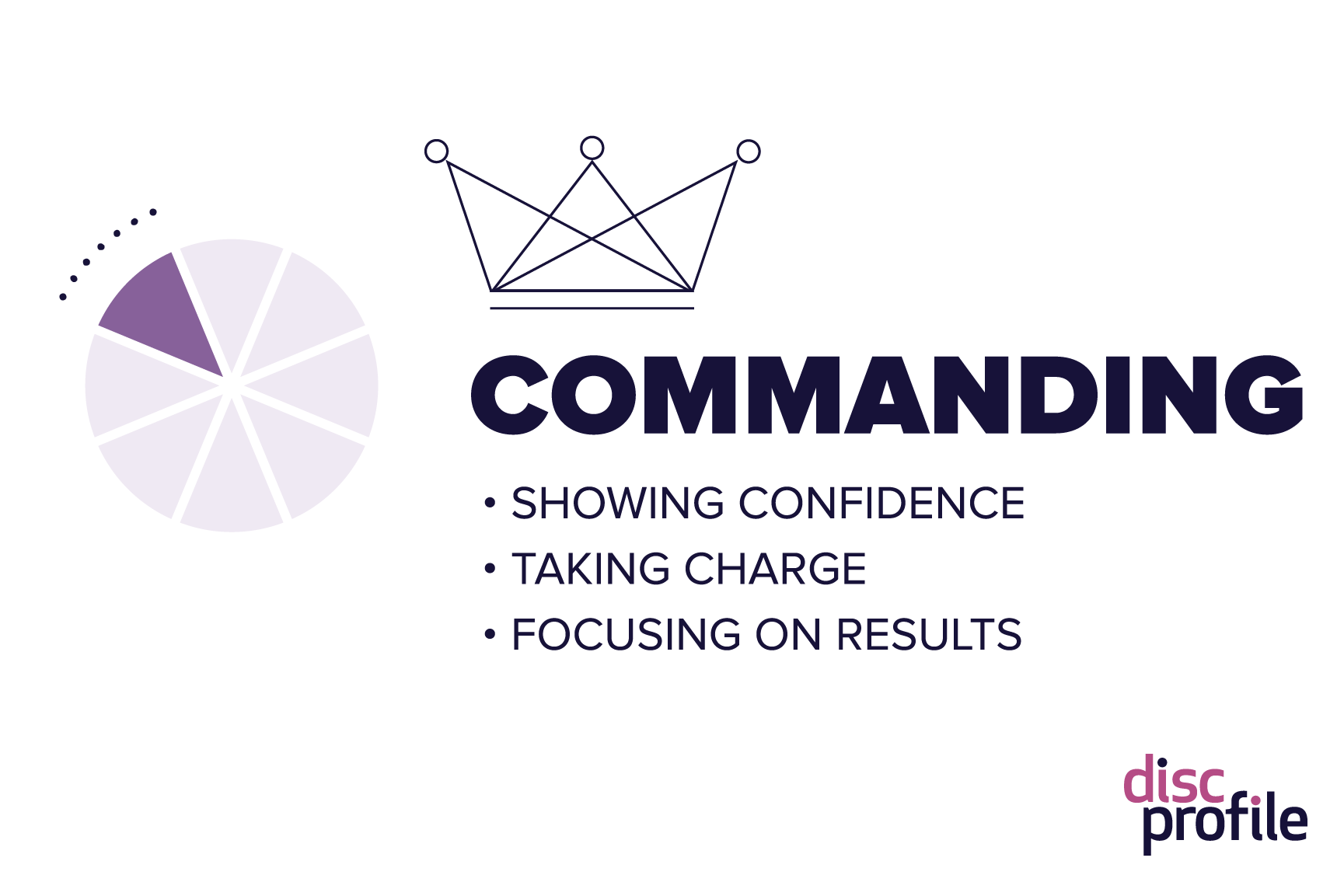Commanding Leaders: DiSC D style Leadership
Key Takeaways
- Commanding leaders align with the D style in the Everything DiSC® model of leadership.
- People with a commanding leadership style are often competitive, determined, and forceful when leading.
- Every type of leader can learn from commanding leaders how to show confidence, take decisive action, and use impatience as a virtue.
Coaches often use the Everything DiSC model for leadership development. It deepens understanding of one's own leadership style and teaches about all eight types of DiSC leadership. This helps you stretch into other styles when the situation calls for it.
The commanding leadership style
Commanding leaders have a natural take-charge attitude and are motivated to achieve. These D-style leaders tend to be competitive, driven, and assertive. They can be powerful, decisive leaders who enlist others to work quickly toward ambitious goals. They enjoy blazing new trails, even through unfamiliar territory.
In their hurry to get results and beat the competition, they can be challenging and demanding. At their worst, commanding leaders can be forceful or egotistical. They may push others without considering team morale or cohesion.

Strengths of commanding leaders:
- They are able to set and stick to aggressive timelines.
- They tend to be very goal-oriented.
- They’re able to speak with conviction.
- They’re not afraid to take some risks.
- They’re comfortable stepping up to take charge when a group lacks direction.
- They’re able to make tough decisions that may not be popular.
- They set high expectations for themselves and others.
Goals of commanding leaders:
- Bottom-line results
- Victory
Areas for improvement:
- Patience
- Empathy
Source: The 8 Dimensions of Leadership
You may have encountered the term “commanding leadership” in Daniel Goleman's leadership model, which has six common leadership styles. The DiSC model we're discussing here is unrelated and approaches the term commanding differently.
The Work of Leaders
What can we learn from commanding leaders?
Commanding leaders may be what people picture when they think of a traditional leader. However, the “command and control” type of leadership is falling out of fashion. You can easily find articles explaining how leaders need to be more affirming or inclusive.
That said, there are still situations in which a commanding leadership style makes the most effective leader. Commanding leaders take decisive action during times of crisis. If a project wallows in input phase, they can take charge and move it quickly ahead toward results.
Here are some lessons that people of every leadership style can take from commanding leaders.
1. Confidence matters
Humans respond well to confidence and conviction. You can’t make decisions people will believe in without showing confidence. Confidence shows a commitment to—and belief in—oneself and one’s team.
Do you want someone to follow you into the unknown? Then show confidence in being able to blaze (or stay on) the trail. Confidence allows you to make tough decisions and it’s also reassuring for your team. Leaders early in their careers sometimes struggle with this.
One way to display confidence is to make firm, public commitments. Commanding leaders speak firmly, and their audience responds by giving more credibility to their ideas. People view these leaders as discerning, critical, and capable.
Leaders are responsible for initiating change. The confidence they show funnels through their organizations, making that change easier to believe in.
Susan Gebelein et al., Successful Executives Handbook
2. Decisive actions can’t wait for everyone’s permission
Groups want to evolve, grow, and be successful. Many in your organization want to push toward bigger and better things. Leaders who put unnecessary restrictions on their actions will miss opportunities or lack the courage to act on them.
The words “can’t” and “should” can hold a leader back. Examine them critically. Can you change the rules? Are you interpreting them too narrowly?
Leaders who see themselves as powerful are willing to shift things as they see fit. They take the risk of speaking up first. You don’t have to be a bully or egomaniac to believe in your ability to make a difference and to act.
Simon Sinek, author and speaker
3. Impatience can be a virtue
Impatience can be a tool to create urgency in work environments. Impatience can inspire others to achieve more quickly or more effectively than they thought they could. It gets us past doing just what’s comfortable. Impatience in a leader initiates projects and maintains their momentum.
Great commanding leaders use their impatience to support their vision of a better future. Their sense of urgency and excitement adjust the expectations of those around them. They enlist others for support and investment and show how they fit into the grand vision. They also hold people responsible for deadlines and results.
Marcus Buckingham, author and business consultant
Growth opportunities for DiSC D-style leaders
Softening aggression
There's a reason commanding leaders have to practice flexing into different leadership styles. When commanding leadership is used ineffectively, it can be seen as autocratic. An inflated sense of power can close leaders off to outside input.
This leadership style can take a heavy toll on those who value collaboration and support. Commanding leaders need to understand that for them to win, others do not have to lose or fail. Assertiveness can easily turn into aggression.
Recognizing others
Commanding leaders often fail to recognize the contributions of others. They hold themselves to high standards and tend to set the bar high for others, only giving praise for the truly spectacular. While they might live comfortably with constant pressure to perform, they need to recognize that others do not. They benefit from recognizing that emotions and vulnerability aren’t necessarily weaknesses.
Motivating without fear
The words and actions of a commanding leader can seem fairly harmless in their own minds. But to others, they can sound harsh, combative, and demoralizing. If people see you as a hostile or indifferent leader, it's difficult for them to feel loyalty and perform well.
Leaders who show frustration, rather than focused impatience, can make their followers feel stressed and fearful. Naturally commanding leaders need to learn to maintain their composure.
DiSC for leadership development
Everything DiSC Work of Leaders® guides leaders of all styles and experience levels in developing their leadership skills. Learners discover their DiSC leadership style and how to adapt to different situations to become a more effective leader.
Related reading
Confidence matters
- Increase Your Personal Authority, ProjectSkillsMentor video
- The Practical Guide to Building Confidence as a Leader, Anchor Advisors
- Four Key Mindsets To Own Your Confidence In Leadership And Increase Your Success, Forbes Coaches Council
Decisive actions can’t wait for everyone’s permission
- What Courageous Leaders Do Differently, Harvard Business Review
- Leadership Courage: The Four Types Needed in the Workplace, Real Leaders
- Beyond the Rules, A Bold Leader
Impatience can be a virtue
- GLS21 Notes: The Urgency of a Leader, The Global Leadership Summit
- Why It’s Okay For Leaders To Be Impatient, Forbes
- Impatiently Patient, Korn Ferry
Posted 10/03/2018







